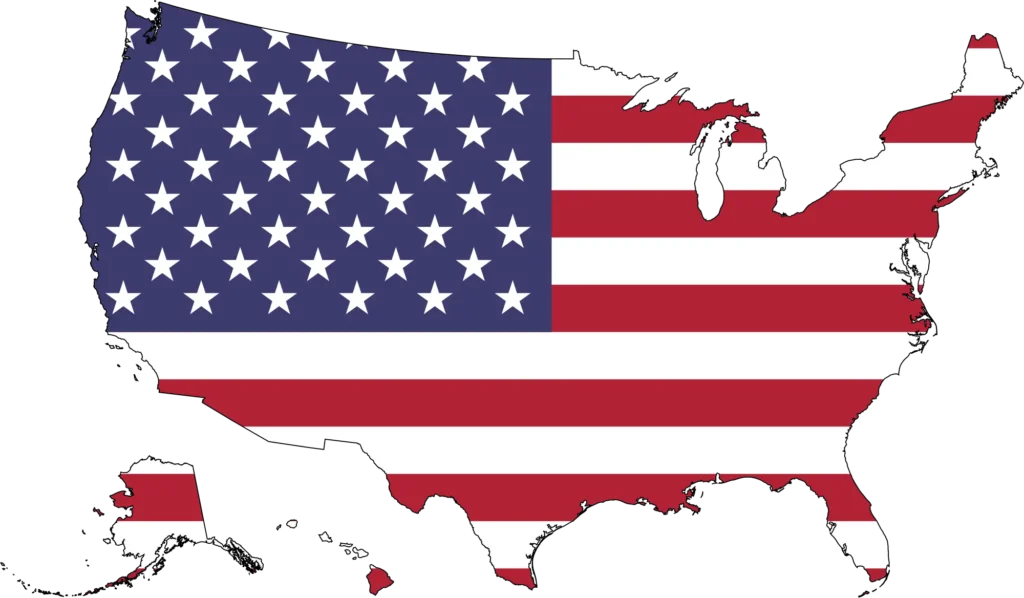United States of America
Washington, D.C., United States Dollar (USD)

Study in United States
The U.S. is a country of 50 states covering a vast swath of North America, with Alaska in the northwest and Hawaii extending the nation’s presence into the Pacific Ocean. Major Atlantic Coast cities are New York, a global finance and culture centre, and capital Washington, DC. Midwestern metropolis Chicago is known for influential architecture The USA is one of the top student destinations in the world with a range of universities that offer quality education and have an excellent international reputation. As a matter of fact, 92 of the top 200 universities in the world are based in the USA. Studying in the US gives you an opportunity to meet, share and compete with not only the best brains but also experience cultural diversity at the same time. The USA attracts the highest number of international students through 5,000 accredited colleges and universities, which offer a wide range of graduate and undergraduate programs. The country has extremely flexible education system coupled with high quality of education. Students can avail financial assistance in the form of scholarships and internships and can also earn while studying.
- Quick Info
- Why Study In US?
- Education System / Cost
- Test / Intake
- Popular Universities / Courses
- Capital of USA : Washington DC
- Languages spoken:English
- Government:Federal Parliamentary Constitutional Repulic
- Population of USA:316,130,000
- Currency:United states Dollar (USD)
- Time zone:(UTC-5 to -10)
Academic choice and flexibility. The USA has one of the world’s best university systems, offering flexible education opportunities at over 4,000 institutions. It is also common for students to change university after 2 years of study in the USA, or to transfer into a US university after studying in another country.
Both the tuition costs to study in the USA and living costs vary considerably between different universities/colleges, educations and cities. Tuition is usually between $5,000 and $50,000 per year. Costs for food and living are normally between $5,000 and $11,000 dollars per year.
However, there are limited scholarship options for international students who wish to study in the US for free. To help you, scholars4dev.com compiled a list of scholarships in USA offered by US Colleges and Universities as well as scholarships granted by US government and institutions.
American public education is operated by state and local governments, regulated by the United States Department of Education through restrictions on federal grants. In most states, children are required to attend school from the age of six or seven until they turn 18.some states allow students to leave school at 16 or 17.
About 12% of children are enrolled in parochial or nonsectarian private schools. Just over 2% of children are homeschooled. The U.S. spends more on education per student than any nation in the world, spending more than $11,000 per elementary student in 2010 and more than $12,000 per high school student. Some 80% of U.S. college students attend public universities.
The United States has many competitive private and public institutions of higher education. The majority of the world’s top universities listed by different ranking organizations are in the U.S. There are also local community colleges with generally more open admission policies, shorter academic programs, and lower tuition. Of Americans 25 and older, 84.6% graduated from high school, 52.6% attended some college, 27.2% earned a bachelor’s degree, and 9.6% earned graduate degrees. The basic literacy rate is approximately 99%. The United Nations assigns the United States an Education Index of 0.97, tying it for 12th in the world.
As for public expenditures on higher education, the U.S. trails some other OECD nations but spends more per student than the OECD average, and more than all nations in combined public and private spending. As of 2012, student loan debt exceeded one trillion dollars, more than Americans owe on credit cards.
Educational cost
The study costs depend on what degree you are pursuing- Bachelor’s, Master’s or PhD. The costs also vary according to the type of institutes i.e. public or private. The Bachelor’s degree tuition fee can range from $ 15000 to $ 55000 per year. The Master’s degree in the USA can range from $ 15000 to $ 30,000 per year.
Test:
- TOEFL: Test of English as a Foreign Language (TOEFL)
- IELTS: International English Language Testing System
- GRE : Graduate Record Examination
- GMAT : Graduate Management Admission Test
- SAT : Scholastic Aptitude Test
- LSAT : Law School data assembly services
- MCAT : Medical College Admission Test
Intake:
- January
- August
Popular Courses
- Computer Science Engineering
- Electrical and Electronics Engineering
- Mechanical Engineering
- Business Administration
- Healthcare
Popular Universities
- Massachusetts institute of technology (M.I.T)
- Stanford University
- Harvard University
- California institute of technology (Caltech)
- University of Chicago
- Princeton University
- Cornell University
- Yale University
- John Hopkins university
- Columbia university
- University of Illinois, Chicago
- University of Kansas, Lawrence
- University of Cincinnati, Ohio
- The State University of New York, Albany (SUNY Albany)
- INTO-Washington State University, Pullman, Washington)
